The Ridge Racer Team had become very confident with the franchise and wanted to give audiences an entirely new perspective on the series. They began by rewriting the game from the ground up. The hardware they were working with was beginning to show its age and Sony had already shipped development kits for the upcoming Playstation 2. R4 would be the swan song for the original Playstation console. As such the team at Namco wanted to make sure that the game went out on top. To keep players engaged it would not be enough to simply have a great racing game to play through, audiences wanted to be engaged on multiple levels, they wanted more immersion.
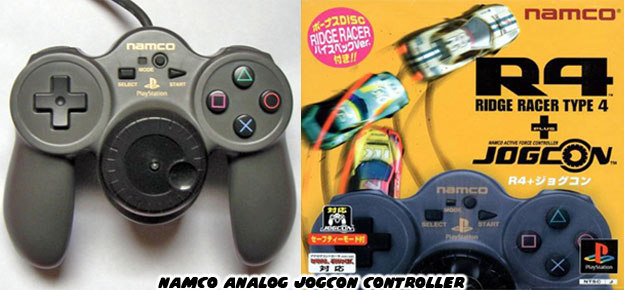
It would be difficult for Namco to sell players on $4000 deluxe sit down arcade cabinets for just one game. They needed to do something to recreate the arcade feel while providing all of the benefits of home gaming. The studio developed an analog controller called the Jogcon. It was an updated version of the classic Playstation controller only this version had a steering wheel situated in the center. Players could drive with their left hand or even with their thumbs.
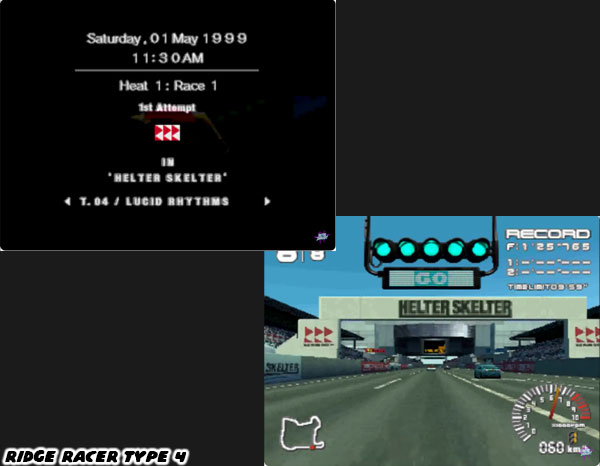
The Jogcon was sold with special editions of the game. It was by far less expensive than purchasing a dedicated gaming steering wheel while still giving a greater sense of control over the digital directional pad. The dual analog joysticks would not appear on a console until the Playstation 2 a year later. How the gamer played the title was one thing, how they were expected to perceive it was something else entirely.
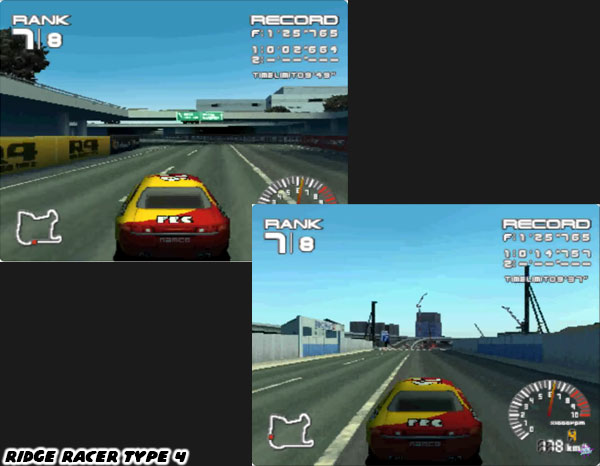
Namco had a very ambitious goal for the franchise. They wanted audiences to take the game in earnest, or at least as seriously as the biggest AAA titles from other studios. They wanted players to believe that they would be competing in a living, breathing environment. A place that would only grow and become better as the years went on. From this point on the studio would present a more complete picture of the world that the developers had imagined but could never commit to the game. Instead of an attract screen that flashed random gameplay elements or an opening film that played like a disjointed music video the studio went for a full blown movie experience. It was apparent in the cinematic
Ridge Racer Type 4 opening. The "race queen" model Reiko Nagase was formally introduced to audiences. She had appeared in every iteration of the game up until that point but hadn't been a named main character until then. The team managers that players would drive for; Robert Chrisman, Shinji Yazaki, Eniki Gilbert and Sophie Chevalier got top billing.
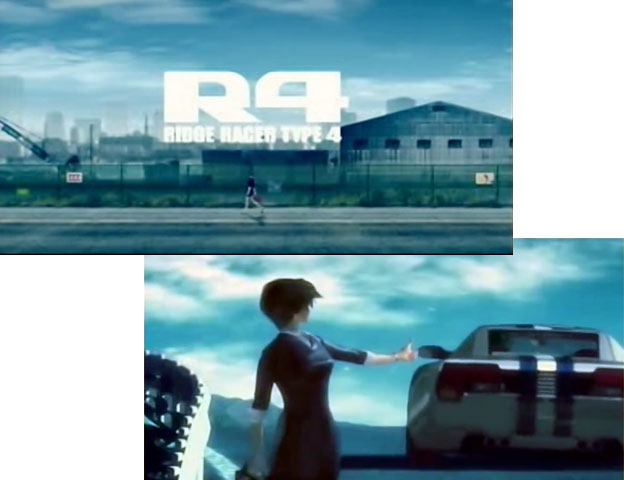
The game didn't actually feature any longer cinematic sequences than the introduction.The story portions covered during the Grand Prix mode were presented as 2D frames with text. The memory was limited to the storage capacity of a CD-ROM after all. That did not stop the studio from trying to immerse players into the experience. The game had eight courses double the amount of courses in Rage Racer and more than any previous title, not including mirrored or reverse courses. It also had over 20 music tracks, again double of what the team was able to put into Rage Racer. They had clearly learned how to optimize every ounce of storage and processing power available to them. The biggest surprise was yet to come for audiences.
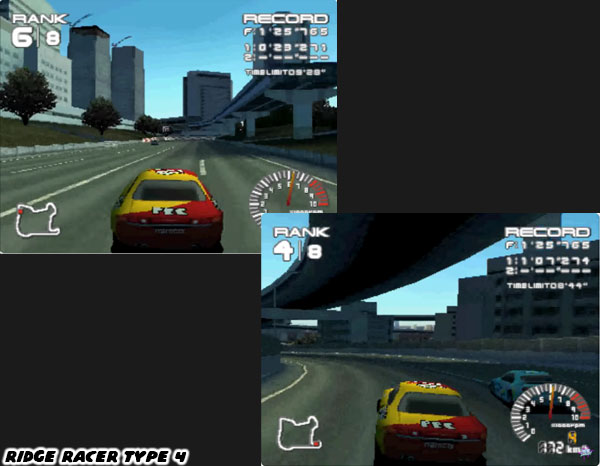
Players learned that they would be competing for the prestigious Real Racing Roots '99 trophy. The game put them in the role of a hot freelance driver that had caught the attention of four notable teams. Each team featured cars that handled and performed differently, breaking from the school of design that had players choose between a beginner, intermediate and expert cars. The teams represented the legacy of the designers at Namco. There was the Dig Racing Team, which featured Dig Dug livery. The Pac Racing Club, which as you can imagine was themed on Pac Man. Racing Team Solvalou had the colors of the space shooter Xevious and finally R.C. Micro Mouse Mappy which had the colorful cars themed on the puzzle game Mappy. Each of the clubs had different owners and team managers with diverse priorities. The garages that served as the backdrop between levels would be set by the team that players joined. They could tell during the selection process which teams had huge budgets and which were modest.
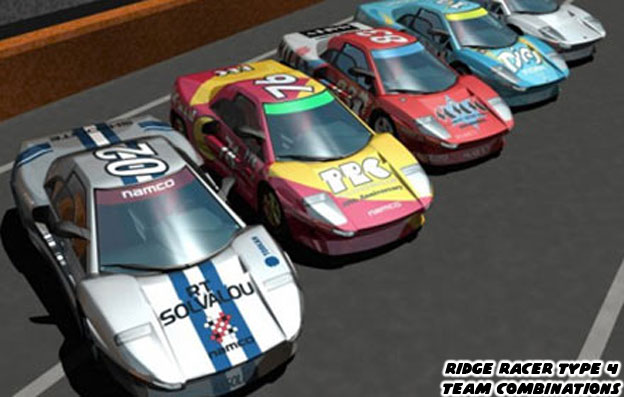
Players learned that not only could they choose from the four teams but they could also choose from four auto manufacturers. The livery for each team would be wrapped on whichever starting car the player selected. As the game progressed players would earn new cars from their sponsors. Players could not buy cars with race winnings, as they did in Rage Racer. Instead it was a one-season run with no repeats and no cash payouts. New cars were earned based on how well gamers placed in each race. It was the economics of real world racing being introduced to the series. Sponsors rewarded victory generously and tightened their purse strings during a losing season.
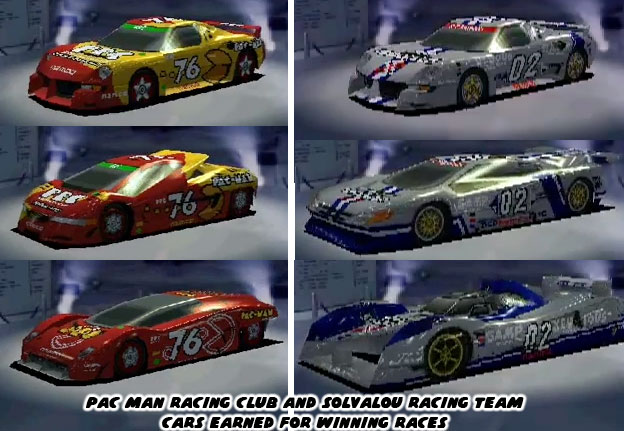
Between the four teams, four manufacturers, eight tracks and multiple finishing positions it was possible for players to unlock 320 cars. Granted many of these were the same car but with different team colors on them but the high end cars for getting first place were unique for each team and manufacturer combination. As soon as racing fans found out the sheer number of cars they could earn they went crazy over the title. Namco had given players a title that would keep them busy well until the Playstation 2 had rolled out. What kept the players engaged was far more than just a great gaming experience. The immersion that Namco was going for would reveal itself little by little as the game progressed. The next blog will take a closer look at how the studio accomplished that.
As always if you would like to sponsor me
please visit my Patreon page and consider donating each month, even as little as $1 would help make better blogs and even podcasts!














The teams are really eye catching a good call on Namco's part.
ReplyDelete